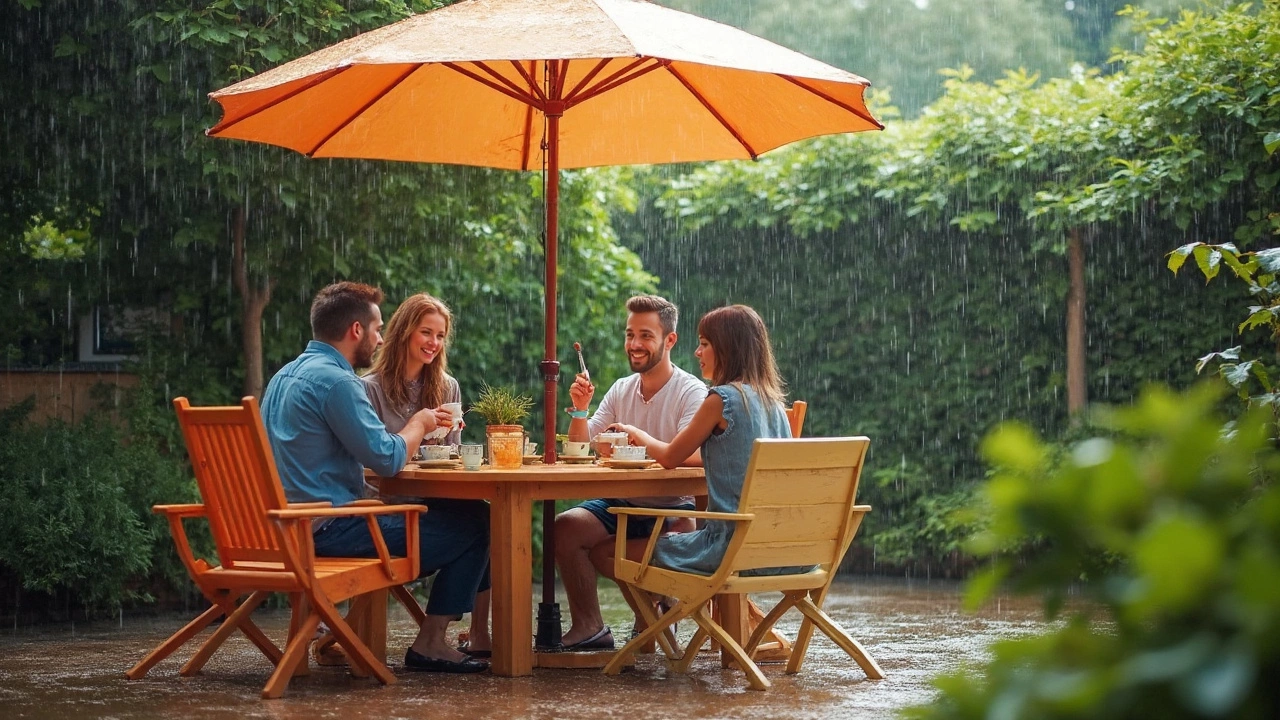Patio Tips: Choose Weather‑Resistant Furniture for Year‑Round Comfort
Outdoor furniture looks great when you first buy it, but the British weather can be harsh. Sun can fade fabrics, rain can rust metal, and snow can freeze cushions. The good news? You don’t have to replace your patio set every season. With a few smart choices you can keep your furniture looking fresh and functional for years.
What Makes Patio Furniture Weather‑Resistant?
The first thing to look at is the frame. Aluminum is lightweight, won’t rust, and holds up to wind. Powder‑coated steel is heavier but also resists corrosion if the coating is intact. Teak is a classic choice – its natural oils act like a built‑in waterproofing, but you’ll need to oil it every few years to keep the look.
Next, check the fabric. Solution‑dye polyester, often sold under brand names like Sunbrella, embeds colour deep inside the fibers, so it won’t bleed or fade quickly. Look for fabrics that are UV‑protected and water‑repellent. Avoid plain cotton – it soaks up water and takes a long time to dry.
Cushions deserve special attention. High‑density foam holds its shape, while a quick‑dry foam core lets water drain out. A removable, water‑proof cover adds a layer of protection and makes cleaning easy. Make sure the cushion’s stitching is tight; loose seams let moisture in.
Finally, think about the finish. Powder‑coated metal and sealed wood resist moisture better than painted finishes. Some synthetic wicker has a UV‑stable coating that won’t crack in strong sun.
Top Materials and Brands for the UK Climate
Aluminum frames are a safe bet for most UK gardens. Brands like Garden Room and Outdoor Living offer rust‑free powder‑coated pieces that stay light enough to move around. If you love a natural look, choose teak from suppliers who source sustainably certified wood – Bower and West Elm have good options.
Synthetic resin wicker mimics the look of classic wicker but won’t rot. Look for UV‑stabilised versions from brands such as Fortnum & Mason Outdoor. For heavy‑duty use, galvanized steel with a thick powder coat provides extra strength; IKEA’s outdoor range includes steel tables that pass a rust test.
When you shop, ask about warranty. A five‑year frame warranty signals confidence. Check the product for a drip edge – a small slope that directs water away from the seat. Test stability by giving the chair a gentle push; it shouldn’t wobble.
Maintenance is simple if you plan ahead. Store cushions in a dry box or use an outdoor storage bag during the winter months. A quick hose down of the frame and a wipe with mild soap keeps grime at bay. Re‑oil teak once a year and replace fabric covers when they start to look worn.
To sum up, a durable patio set needs a rust‑free frame, UV‑protected fabric, quick‑dry cushions, and a protective finish. Choose materials that match your garden’s exposure – sunny spots need stronger UV protection, while shady areas can get away with lighter fabrics.
Use this quick checklist before you buy:
- Frame: aluminum or powder‑coated steel
- Fabric: solution‑dye polyester with UV protection
- Cushions: high‑density, quick‑dry core, removable cover
- Finish: powder coat or sealed wood
- Warranty: at least 3‑5 years on frame
Follow these tips and you’ll enjoy a patio that looks great through rain, shine and everything in between.
Do Mosquitoes Love Wicker Furniture? What Science Really Says
Are mosquitoes drawn to wicker furniture? Uncover the truth, science-backed facts and tips to keep your garden hangouts bite-free, all in one place.
MoreBest Material for Outdoor Furniture in Rain: What Really Holds Up?
When it starts pouring, choosing the right material for outdoor furniture can mean the difference between lasting comfort and a soggy mess. This article breaks down which materials stand up to rain, from teak to plastic. We’ll dig into real-life maintenance, practical tips, and what you should totally avoid. Whether you’re hosting in the backyard or just want someplace dry to sip your morning coffee, the guide is no-nonsense and straight to the point. Be ready for any weather and keep your furniture looking sharp.
More

